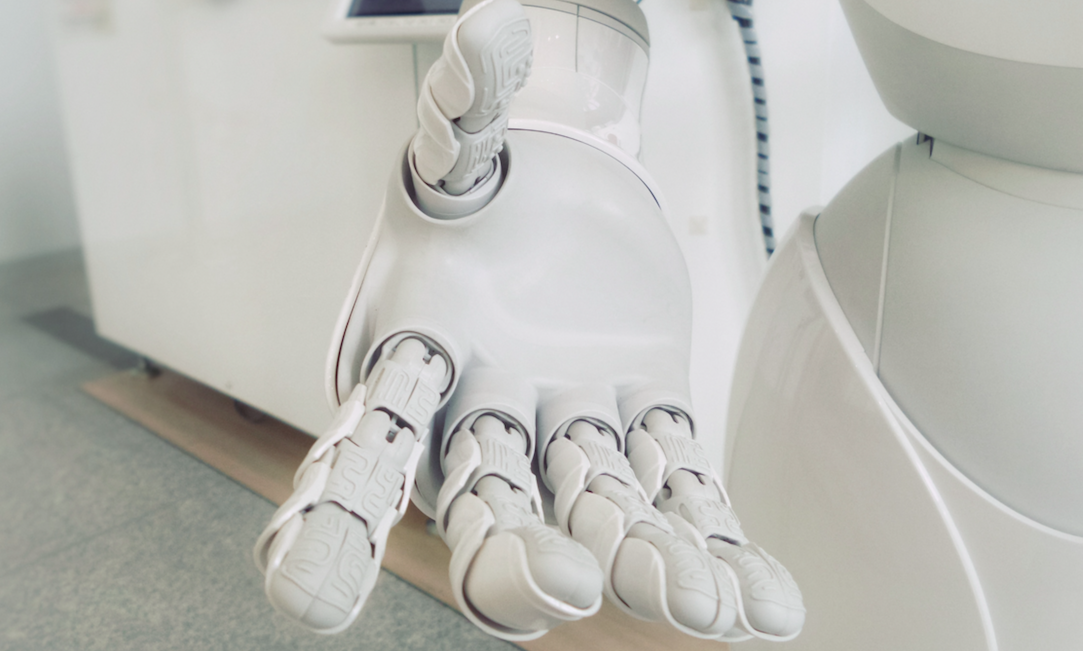A Look Into the Future: AI in Healthcare
In a data-driven world, we’re constantly looking for more ways to gain information. Gathering insight helps institutions and businesses complete a number of tasks—including market to consumers, learn about different patterns and behaviors, and make educated decisions.
It’s one thing to have the tools to collect these findings, but how do we assess and utilize the results?
It’s too cumbersome to have data experts behind screens 24/7 to capture, analyze, and properly leverage information—especially when each company or initiative would need to do so. Not only would this be timely and costly, but there would also be too much room for error. (After all, they are only human.)
That’s where non-human, computer-based resources come into play.
Because we are able to gather and track more data than ever before, artificial intelligence and machine learning have also started to impact our daily lives.
With advanced recognition systems, complex algorithms, and intricate assessments of variables (and probability), artificial intelligence—otherwise known as AI—is infiltrating a number of industries.
Healthcare
One vertical that is at the top of the list to see a huge impact thanks to AI is healthcare. In fact, as Forbes reports, “the total public and private sector investment in healthcare AI is stunning: All told, it is expected to reach $6.6 billion by 2021, according to some estimates. Even more staggering, Accenture predicts that the top AI applications may result in annual savings of $150 billion by 2026.”
In addition to diagnostics and specific services (such a surgery), industry experts expect AI to enhance digital tools for operational and administrative purposes.
Surgery
If you were going to have a procedure, would you rather have one that was more or less invasive? How about the size of incision and scars, or the amount of recovery time required?
Of course, the less trauma our body endures to solve an issue the better, which is why AI already has a huge presence in surgery.
Robotic surgeries have taken over specific areas of surgery, including orthopedic hip and knee replacements, neurology, and even cardiology.
Typically, the AI-enabled device is meant to mimic the surgeon’s hands, and in some cases can offer more accuracy or consistency (not to mention speed) than a human. This can help to supplement a surgeon’s work during a particularly long or grueling procedure, or allow the surgeon more precision as they control the device within a close proximity to the patient.
Radiology
Because radiology is an image-based specialty, it could respond particularly well to AI support. This is especially true as it pertains to oncology, or in cases when polyps or lesions could be harder to detect.
With the ability to identify the presence of a fracture, nodule, or hemorrhage in a CT or MRI, some think that AI could completely take over radiology.
Of course, radiologists do more than just read images. There are many variables and symptoms to consider, plus cross-consultation with physicians in other areas and the treatment of individual conditions. Because of this, AI isn’t advanced enough to replace a specialized physician.
Another issue is that implementing AI-assisted imaging technology will not only be costly, but it will also endure a long road toward clearance by the FDA.
It’s more reasonable that we will see AI being leveraged to help with the workflow and more tedious tasks of radiology services.
The focus is more on how AI can enhance radiology, not replace radiologists themselves. With the support of AI methods, radiologists could experience an increase in efficiency and quality.
As Radiology Today Magazine noted when speaking with experts, “those who believe AI is poised to replace radiologists don’t fully recognize the value these tools may bring in helping radiologists coordinate and integrate information, identify patients for screening examinations, prioritize patients for immediate interpretation, standardize reporting, and characterize diseases.”
Health Records
It’s no secret that electronic health records have become the standard in healthcare. It’s also no secret that along with the digital convenience of EHRs also comes some challenges.
With so much data being captured across different platforms and in various formats, it can be difficult to pool all relevant patient information in one easy-to-find place.
Using AI to create more user-friendly interfaces that can automate some of the documentation, organization, and filtering can save precious time for clinicians.
On top of that, voice recognition and natural language processing have helped to quicken the speed in which data is recorded and stored.
As for what’s ahead, video footage of appointments where AI is able to extract important data, qualify it, and save it for future retrieval could be the next step.
Smartphones
Smartphone manufacturers have already started integrating AI software into devices, and refining this for healthcare purposes could help immensely in the medical space.
The quality of the cameras on our mobile devices has improved in leaps and bounds over the last several years. This can help us use self-taken photos for diagnostic purposes, such as for dermatology or ophthalmology issues.
This could be especially helpful in remote or hard-to-reach areas.
As Health IT Analytics explains, “Using smartphones to collect images of eyes, skin lesions, wounds, infections, medications, or other subjects may be able to help underserved areas cope with a shortage of specialists while reducing the time-to-diagnosis for certain complaints.”
What’s Ahead
As AI continues to integrate into different aspects of healthcare, it will likely have an impact on the personnel needs of practices and hospitals.
Many larger organizations could look to create high-level positions that spearhead and manage its AI initiatives, such as Chief Innovation Officers.
Additionally, specially skilled technicians and nurses will be needed to oversee the use and maintenance of machines within operating and service rooms.
What You Can Do
As we wait to see how the industry progresses in regards to AI and machine learning, there are simple things your practice can do to stay updated.
With so many aspects of healthcare now digital—including EHRs—it’s more convenient and efficient to lead your office in that direction as well.
By transitioning to electronic intake forms, you allow patients to fill out personal information in the comfort of their own home, or when they are on the go. Even if only a percentage of your patients complete their “paperwork” ahead of time, you are still able to cut down on average wait times.
Plus, if a patient does choose to wait and fill out forms in your waiting room, IntakeQ gives you the ability to offer them on an iPad or similar mobile device.
All this helps to keep patient files and data organized, complete, and easy to retrieve.
Other digital features are important to patients, too. Having the ability to schedule, change, or cancel appointments without having to pick up the phone is a huge plus these days. Thankfully, IntakeQ can help your practice incorporate that into your capabilities as well.
Free Download: 5 Facts About AI
Final Thoughts
It’s hard to predict exactly how AI could impact healthcare, but we’re excited to see what’s on the horizon.
As mentioned, it’s important to keep in mind that these innovations aren’t meant to replace practitioners with smart medical devices and computers, but rather to help enhance the care of patients.
After all, as we’ve seen, the industry is continually becoming more patient-centric in an effort to deliver more comprehensive, effective care to more people.





